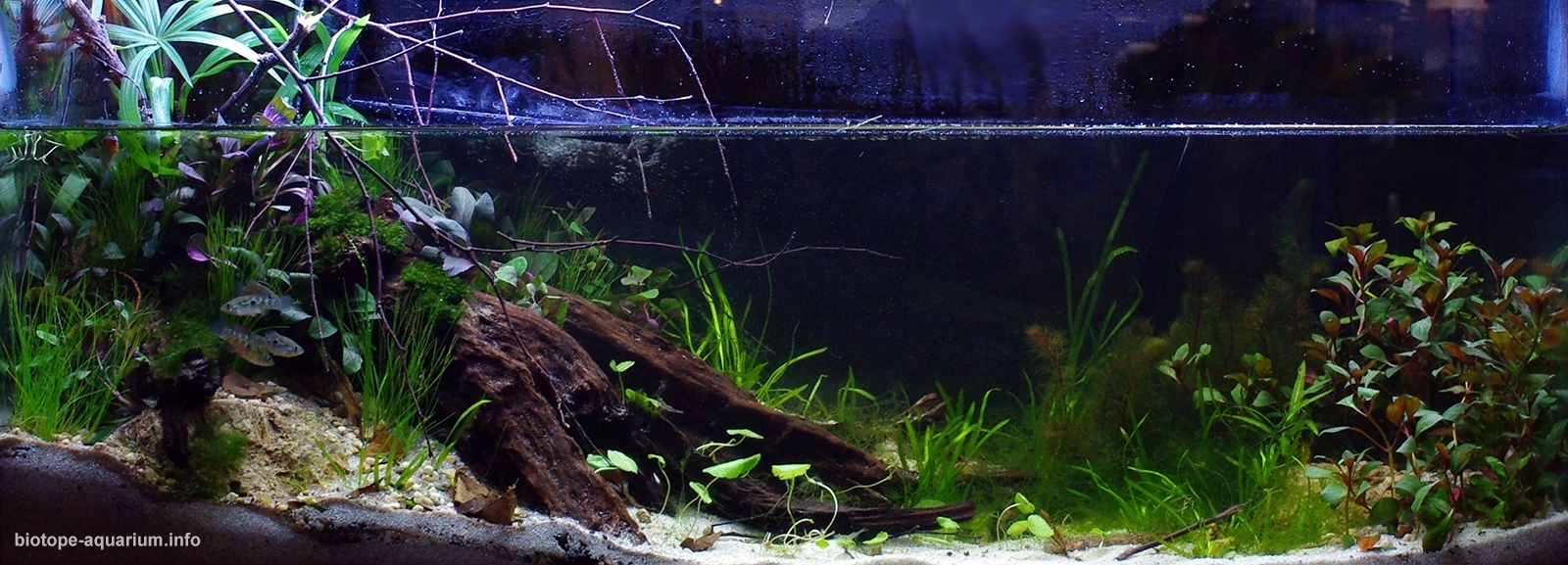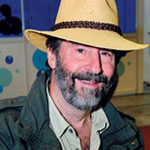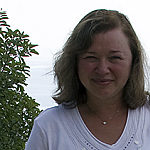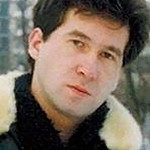Ichetucknee springs, Florida, USA
The 2nd place in the final of the Biotope Aquarium Design Contest 2013
![]() Russia. Anastasia Melnikova
Russia. Anastasia Melnikova

Volume: 180 L
List of fishes: Elassoma zonatum, Jordanella Floridae, Poecilia Latipinna, Palaemonetes sp., Pomacea Paludosa.
List of plants: Sagittaria kurzeriana, Myriophyllum pinnatum, Charra sp., Eleocharis baldwinii, Fissidens sp., Cyperus sp..
Biotope description: A small 10 km long Ichetucknee River (Florida) begins from several streams with crystal clear cool water and flows through the picturesque forests of Ichetucknee Springs State Park before flowing into Santa Fe River. Its banks are steep and rocky in some places and flat in others, covered with bushes and trees. The water is so clear that light, almost white sand, underwater vegetation like in the Dutch garden, limestone rocks, sunken driftwood and branches are visible. This aquarium shows Ichetucknee coastal area near the spring, where in the dense thicket of plants medium and small fishes and invertebrates are.
Anastasia’s comment about the contest: This contest is my favorite from all contests I know! And when I was just an observer, and even more now when I became a participant. It is favorite because it is the most difficult. Like a multisport race: at each stage you can make a fatal mistake. Biotope contest is also difficult for the organizers: it is a relatively new direction, there is a lot of shades and features. But the result of mutual efforts every year becomes more and more obvious, the contest has gained international status, and many aquarists already think of not just a beautiful aquarium, but of a beautiful piece of the underwater world where their pets feel at home, as in a native tributary of the Rio Negro.

Beautiful, the only correction maybe next time: too many plants on the right hand side and no P. latipinna in that area… (unless introuced?)

It is a very beautiful and interesting entry that makes you look at it, stay on the details, look into the different parts of small underwater world. I like the way plants are planted. However, in my opinion, there is too much of Lobelia on the right side of the aquarium. Maybe it would be better to plant less of Lobelia or to plant more other plants behind it. The coastline is simulated excellently with access to dry land. Massive driftwood on the left side of the aquarium clearly define where the line is. Thin twigs, Cyperus and several Lobelia leaves above the water create a feeling of a quiet place near the bank of the river with dense thickets of aquatic plants, where small fishes can play and spawn.

In an aesthetic or spiritual perception I liked this entry the most. I wanted to be examining every square inch of this biotope for ever. Everything is made identical to the natural habitats. May be there are slightly more species in a limited space than in nature. And platies first two days felt not very well, that’s why their behavior was unnatural. But I liked everything. Even algae are present in the aquarium as the main food for platies. The only doubt is the presence of Elassoma zonatum exactly at the site of the biotope. In nature, this species does not make spawning migrations and spawns in quiet wetlands. Human activities has bad influence on the population of the species in nature (in particular, draining of wetlands) and the perches are forced to adapt to new conditions (e.g. to river). And also recommendations for the author: if you can not get the native aquatic organisms, do not put in an aquarium wrong ones in the contest. Although they are similar to the native like Palaemon shrimp and blueberry Ampullaria. Some judges will not care, but others can significantly reduce points.
